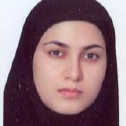International Journal of Information Technology and Computer Science (IJITCS)
IJITCS Vol. 8, No. 4, 8 Apr. 2016
Cover page and Table of Contents: PDF (size: 405KB)
The Use of ANFIS and RBF to Model and Predict the Inhibitory Concentration Values Determined by MTT Assay on Cancer Cell Lines
Full Text (PDF, 405KB), PP.28-34
Views: 0 Downloads: 0
Author(s)
Index Terms
Computational intelligence, Radial basis function, Adaptive neuro-fuzzy inference system, Lung cancer, MTT assay
Abstract
The computational intelligence such as artificial neural network (ANN) and fuzzy inference system (FIS) is a strong tool for prediction and simulation in engineering applications. In this paper, radial basis function (RBF) network and adaptive neuro-fuzzy inference system (ANFIS) are used for prediction of IC50 (the 50% inhibitory concentration) values evaluated by the MTT assay in human cancer cell lines. For developing of the proposed models, the input parameters are the concentration of the drug and the types of cell lines and the output is IC50 values in the A549, H157, H460 and H1975 cell lines. The predicted IC50 values using the proposed RBF and ANFIS models are compared with the experimental data. The obtained results show that both RBF and ANFIS models have achieved good agreement with the experimental data. Therefore, the proposed RBF and ANFIS models are useful, reliable, fast and cheap tools to predict the IC50 values determined by the MTT assay in human cancer cell lines.
Cite This Paper
A. Rezaei, L. Noori, M. Taghipour, "The Use of ANFIS and RBF to Model and Predict the Inhibitory Concentration Values Determined by MTT Assay on Cancer Cell Lines", International Journal of Information Technology and Computer Science(IJITCS), Vol.8, No.4, pp.28-34, 2016. DOI:10.5815/ijitcs.2016.04.04
Reference
[1]C.J. Langer, T. Mok, P.E. Postmus, "Targeted agents in the third-/fourth-line treatment of patients with advanced (stage III/IV) non-small cell lung cancer (NSCLC)", Cancer Treatment Reviews, Vol. 39, pp. 252–260, 2013.
[2]D. Chen, Y. Zhang, X. Zhang, J. Li, B. Han, S. Liu, L. Wang, Y. Ling, S. Mao, X. Wang, "Overexpression of integrin-linked kinase correlates with malignant phenotype in non-small cell lung cancer and promotes lung cancer cell invasion and migration via regulating epithelial–mesenchymal transition (EMT)-related genes", Acta Histochemica ,Vol. 115, pp.128–136, 2013.
[3]S. AbuHammad, M. Zihlif, "Gene expression alterations in doxorubicin resistant MCF7 breast cancer cell line", Genomics, Vol. 101, pp. 213-220, 2013.
[4]F. Hellmers, P. Ferguson, J. Koropatnick, R. Krull, A. Margaritis, "Characterization and in vitro Cytotoxicity of Doxorubicin-loaded-γ-Polyglutamic Acid-Chitosan Composite Nanoparticles," Biochemical Engineering Journal , 2013.
[5]J.J. Shao, A.P. Zhang, W. Qin, L. Zheng, Y.F. Zhu, X. Chen, "AMP-activated protein kinase (AMPK) activation is involved in chrysin-induced growth inhibition and apoptosis in cultured A549 lung cancer cells," Biochemical and Biophysical Research Communications , Vol. 423, pp. 448–453, 2012.
[6]R. Khan, A.Q. Khan, W. Qamar, A. Lateef, M. Tahir, M.U. Rehman, F. Ali, S. Sultana, "Chrysin protects against cisplatin-induced colon. toxicity via amelioration of oxidative stress and apoptosis: Probable role of p38MAPK and p53", Toxicology and Applied Pharmacology , Vol. 258, pp. 315–329, 2012.
[7]M.U. Rehman, M. Tahir, A.Q. Khan, R. Khan, A. Lateef, O. Hamiza, W. Qamar, F. Ali, S. Sultana, "Chrysin suppresses renal carcinogenesis via amelioration of hyperproliferation," oxidative stress and inflammation: Plausible role of NF-κB. Toxicology Letters, Vol. 216, pp. 146–158, 2013.
[8]H.M. Brechbuhl, R. Kachadourian, E. Min, D. Chan, B.J. Day, "Chrysin enhances doxorubicin-induced cytotoxicity in human lung epithelial cancer cell lines: The role of glutathione", Toxicology and Applied Pharmacology , Vol. 258, pp. 1–9, 2012.
[9]H. Wang, F. Wang, X. Tao, H. Cheng, "Ammonia-containing dimethyl sulfoxide: An improved solvent for the dissolution of formazan crystals in the 3-(4,5-dimethylthiazol-2-yl)-2,5-diphenyl tetrazolium bromide (MTT) assay", Analytical Biochemistry, Vol. 421, pp. 324–326, 2012.
[10]Y. Li, W. Huang, S. Huang, J. Du, C. Huang, "Screening of anti-cancer agent using zebrafish: Comparison with the MTT assay", Biochemical and Biophysical Research Communications, Vol. 422, pp. 85–90, 2012.
[11]O. Deeb, "Correlation ranking and stepwise regression procedures in principal components artificial neural networks modeling with application to predict toxic activity and human serum albumin binding affinity", Chemometrics and Intelligent Laboratory Systems, Vol. 104, pp. 181–194, 2010.
[12]I. Yilmaz, O. Kaynar, "Multiple regression, ANN (RBF, MLP) and ANFIS models for prediction of swell potential of clayey soils. Expert Systems with Applications," Vol. 38, pp. 5958–5966, 2011.
[13]R. Vern, S.K. Dubey, "Evaluating the Maintainability of a Software System by using Fuzzy Logic Approach," IJITCS, Vol. 7, pp. 67-72, 2014
[14]T.S. Hai, L.H. Thai, N.T. Thuy, "Facial Expression Classification Using Artificial Neural Network and K-Nearest Neighbor", IJITCS, Vol. 7, pp. 27-32, 2015.
[15]S. Datta, J. Paulchoudhury, "A Comparative Study on the Performance of Fuzzy Rule Base and Artificial Neural Network towards Classification of Yeast Data," IJITCS, Vol. 7, pp. 40-47, 2015.
[16]S. Haykin, "Neural Networks: A Comprehensive Foundation," Prentice-Hall, 1999.
[17]A. Shahsavand, A. Ahmadpour, "Application of Optimal Rbf Neural Networks for Optimization and Characterization of Porous Materials," Computers and Chemical Engineering journal, Vol. 29, pp. 2134-2143, 2005.
[18]B. Yu, X. He, "Training Radial Basis Function Networks with Differential Evolution," PWASET, Vol. 11, pp. 57-160, 2006.
[19]E.J. Hartman, J.D. Keeler, J.M. Kowalski, "Layered neural networks with Gaussian hidden units as universal approximators," Neural Comput., pp. 210–215, 1990.
[20]J.S.R. Jang, "ANFIS: Adaptive-network-based fuzzy inference systems", IEEE Transactions on Systems, Vol. 23, pp. 665-685, 1993.
[21]J.S.R. Jang, C.T. Sun, E. Mizutani, "A Computational Approach to Learning and Machine Intelligence Neuro-Fuzzy and Soft Computing," Prentice Hall, US edition, 1997.
[22]S. Shahbudin, A. Hussain, N.M. Tahir, S.A. Samad, "Adaptive-neuro fuzzy inference system for human posture classification using a simplified shock graph", Visual Informatics: Bridging Research and Practice, pp. 585-595, 2009.
[23]T. Culliere, A. Titli, and J. Corrieu, Neuro-fuzzy modeling of nonlinear systems for control purposes," Proc. IEEE Int. Conf.On Fuzzy Systems," pp. 2009-2016, 1995.


